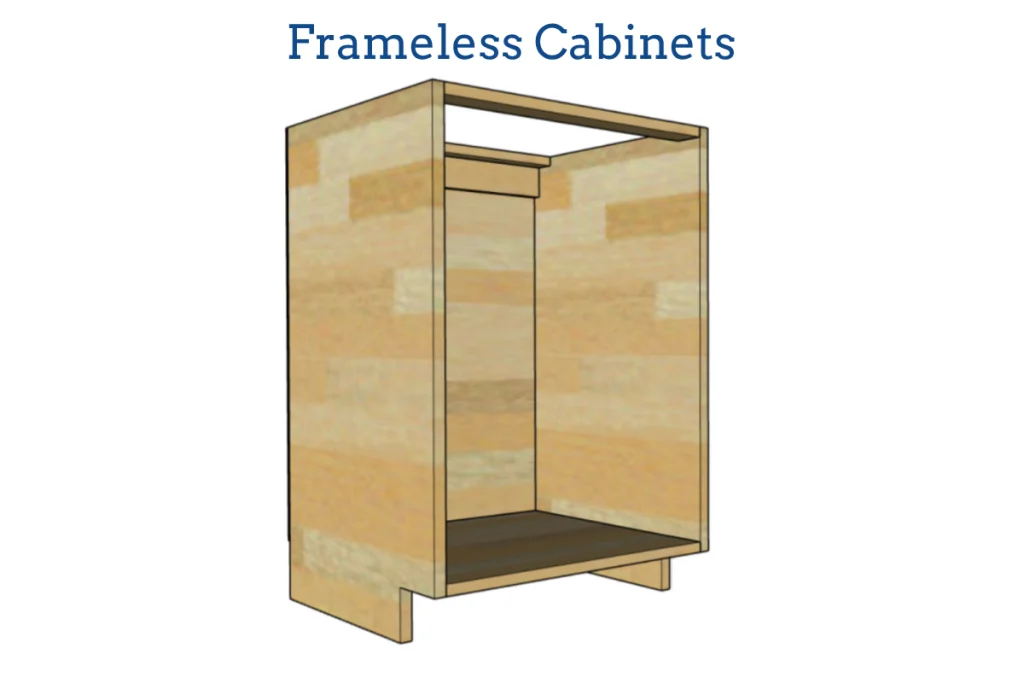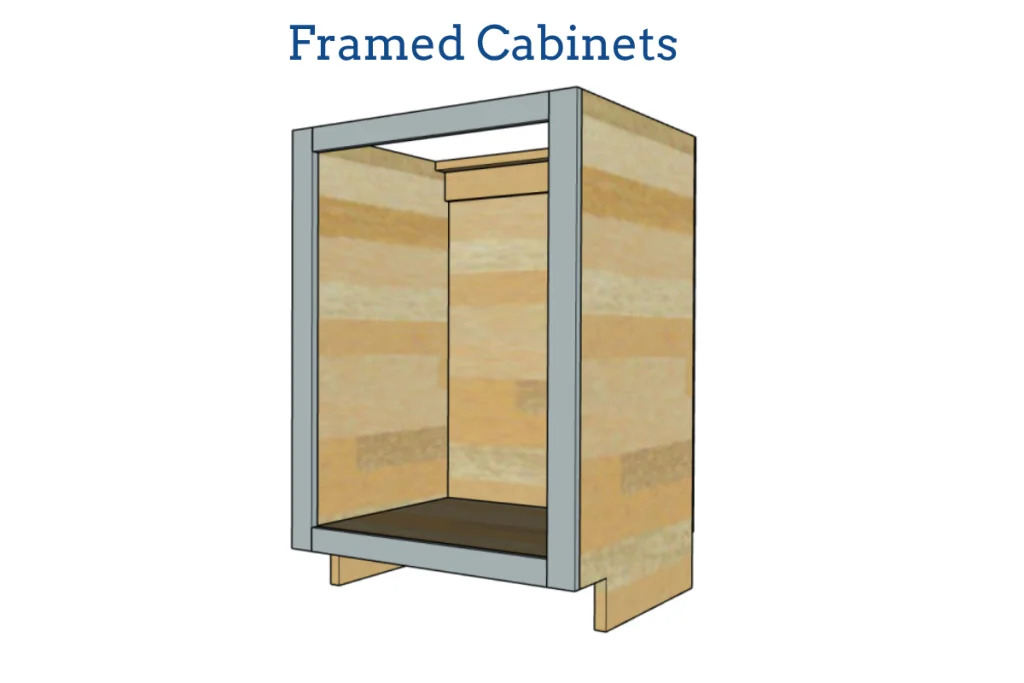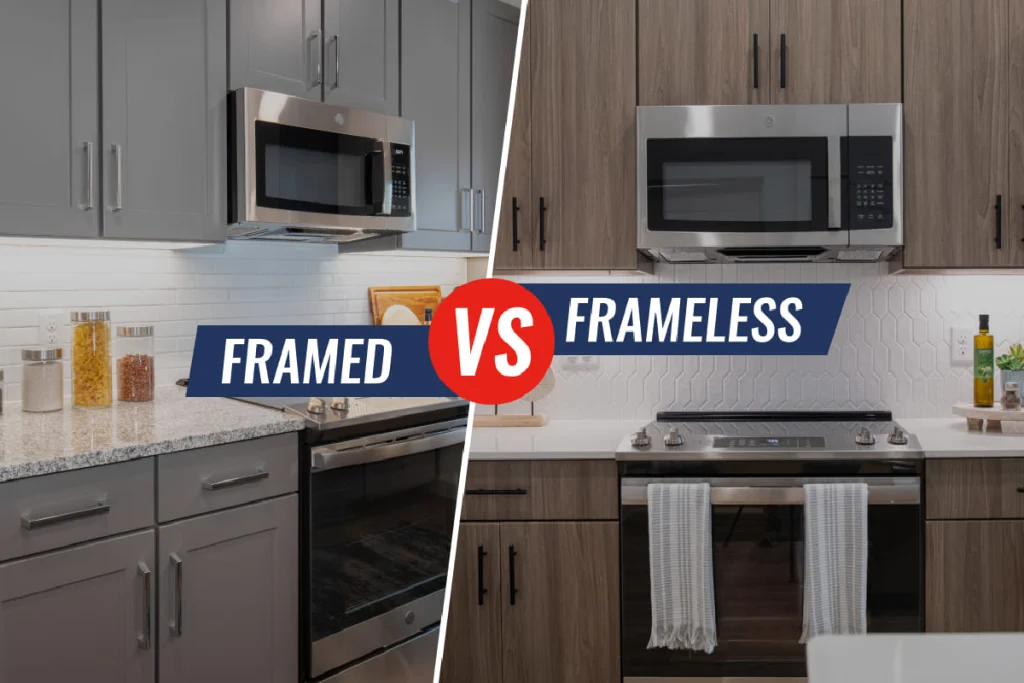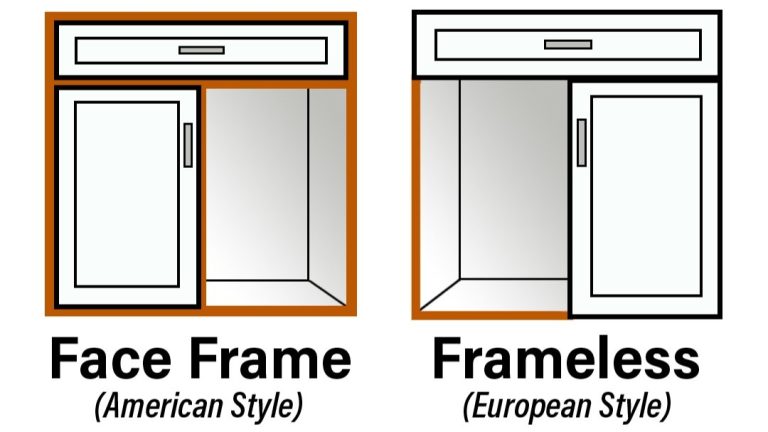Choosing the right cabinetry is one of the most important decisions when planning a kitchen renovation. Frameless and framed cabinets are the two primary styles, each offering advantages depending on your needs and design preferences. This guide will walk you through the key differences, benefits, and considerations for selecting the best type for your kitchen.
What Are Frameless Cabinets?

Frameless cabinets, often European-style cabinets, are known for their sleek, modern design. Unlike traditional cabinets, they lack a face frame, meaning the doors attach directly to the cabinet box. This design choice maximizes storage space and gives a streamlined, full-access look. Frameless cabinets are ideal for contemporary kitchen designs, where clean lines and minimalist aesthetics are often desired.
What Are Framed Cabinets?

Framed cabinets are the more traditional style of cabinetry, commonly found in American homes. These cabinets feature a face frame that outlines the front of the cabinet box, providing extra structural support. The cabinet doors attach to this frame, allowing for various overlay styles like full overlay, partial overlay, or inset doors. Framed cabinets are favored in classic kitchen designs, adding a more detailed, sturdy look that suits traditional and transitional homes.
Design and Aesthetic Differences
The design differences between frameless and framed cabinets are striking. Frameless cabinets offer a seamless, sleek appearance, perfect for modern kitchens. Their minimalist style creates an open, airy feel, which works well in contemporary spaces. On the other hand, framed cabinets provide a more decorative, classic aesthetic, with visible face frames offering a sense of craftsmanship and tradition. The choice ultimately depends on whether you’re aiming for a modern or timeless kitchen look.
Space and Storage Capacity
One of the most significant differences between frameless and framed cabinets is the available storage space. Frameless cabinets, without the face frame, provide more internal room, making it easier to store large items or maximize smaller kitchen spaces. In contrast, framed cabinets may have slightly reduced storage capacity due to the face frame but offer greater structural stability, which can be an important factor in heavy-use kitchens.
Durability and Structural Support
Framed cabinets generally offer more structural support due to the added strength of the face frame. This makes them a durable option for busy kitchens that see a lot of wear and tear. Frameless cabinets, while sturdy, rely on thicker cabinet box materials to achieve a similar level of durability. However, both options can be long-lasting when made from quality materials and installed properly.
Installation Process
Installing frameless cabinets can be slightly more challenging than framed ones, especially in terms of aligning the doors and ensuring everything is level. Frameless cabinets require precise installation since there’s no frame to help with door alignment. Framed cabinets, with their more rigid structure, tend to be easier to install, particularly for DIY projects or uneven walls.
Conclusion
Choosing between frameless and framed cabinets depends on your kitchen’s style, space needs, and personal preferences. Frameless cabinets offer a modern, sleek appearance with more storage space, making them ideal for contemporary kitchens. Framed cabinets provide structural stability and a more traditional look, making them a great fit for classic or transitional kitchens. Evaluate your design goals, practical requirements, and budget to determine which option best suits your home.



